The Engineer

African Heritage Month
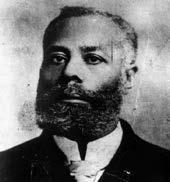
The Life & Enduring Legacy of Philip ‘Skit’ Ferguson
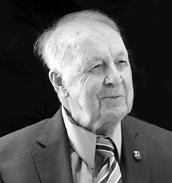





African Heritage Month

The Life & Enduring Legacy of Philip ‘Skit’ Ferguson







Engineers Nova Scotia Council 2024-2025
Dr. Sue Molloy, P.Eng.
Dr. Jennie Rand, P.Eng.
Dr. Adam Donaldson, FEC, P.Eng.
Cliff Johnston, P.Eng.
Wayne MacDonald, P.Eng.
Malcolm Palamarek, P.Eng.
Krista Phillips, P.Eng.
Kayleigh Rainer Brown, P.Eng.
Ian Squires, P.Eng.
Andrew Thalheimer, P.Eng.
Dilan Watson, P.Eng.
Ex-Officio Members
Crysta Cumming, P.Eng.
DS (Pal) Mann, P.Eng.
Zone Representatives
Darrin McLean, FEC, P.Eng.
Oliver Browning, FEC, P.Eng.
Vivek Tomar, FEC, P.Eng.
Conrad LeLièvre, FEC, P.Eng.
Ron Marks, FEC, P.Eng.
Andrew Polegato, FEC, P.Eng.
Harry Daemen, FEC, P.Eng.
Committee Chair Persons
Legislative Committees
Denise Trim, FEC, P.Eng.
Debra McLellan, P.Eng.
George Goad, FEC, P.Eng.
Dr. Adam Donaldson, FEC, P.Eng.
Committees of Council
Jeff Knapp, FEC, P.Eng.
Andrew Thalheimer, P.Eng.
CEO Committees
John Eisnor, FEC, P.Eng.
Thomas Simmons, EIT
James Beck, P.Eng.
Darrell Marsh, P.Eng.
Browren Allard, P.Eng.
Pending
Chris Feetham, FEC, P.Eng.
Selvana Hagh Gooei, P.Eng.
President
Vice-President
Past-President
Councillor
Councillor
Councillor
Councillor
Councillor
Councillor
Councillor
Councillor
Engineers Canada Director
CEO & Registrar
Cape Breton/Victoria Colchester
Halifax/Hants
Kings/Annapolis
Pictou
Cumberland
Antigonish/Guysborough
Board of Examiners
Complaints
Discipline
Nominating
Finance & Audit
Honours & Awards Committee
Continuing Professional Development
Emerging Professionals
Health & Safety
National Engineering Month
Professional Practice
Student Affairs
Sustainability
Women in Engineering

Sue Molloy, PhD, P,Eng, President, Engineers Nova Scotia

Pal Mann, CD, FCSSE, P.Eng., ICD.D, CEO & Registrar, Engineers Nova Scotia
In the heart of Atlantic Canada, Nova Scotia’s engineering community is quietly revolutionizing the way we live, work, and interact with our world. From the bustling streets of Halifax to the rugged coastlines of Cape Breton, engineers are opening doors to innovation, sustainability, and progress.
For over a century, Engineers Nova Scotia has been at the forefront of regulating and advancing the engineering profession in the province. With a community of over 9,000 Professional Engineers and Engineers-in-Training, this organization has fostered a culture of excellence that reverberates through every sector of Nova Scotia’s economy.
The engineering spirit in Nova Scotia starts young. Through activities during National Engineering Month, which take place every March, students and the public are exposed to the limitless possibilities that engineering offers. In March 2024, our Public Engineering Day at the Halifax Public Library drew
over 400 children, parents and members of the public to learn more about engineering and participate in STEM related activities. Our continued support of the Atlantic Science Links Association, the Discovery Centre, Techsploration, and Nova Scotia Science Fair competitions are all geared towards raising awareness of STEM careers. These events spark curiosity and inspire the next generation, creating opportunities for people of all backgrounds and circumstances.
of life, protect the environment, and drive economic growth.
Nova Scotia’s engineers aren’t just making a difference locally; they’re opening doors on a global scale. Through organizations like COVE, engineers are applying their skills to tackle challenges with potential impacts on climate change mitigation, sustainable ocean resource management, and the advancement of marine technologies worldwide, proving that engineering knows no borders.
In an era of rapid technological advancement, Nova Scotia’s engineers will be key members of interdisciplinary teams ready to open doors to new technologies and methodologies. Whether
To aspiring engineers and those considering a career change, the message is clear: engineering in Nova Scotia is more than a profession—it’s a calling to help shape the world around us. It’s an invitation to open doors to possibilities yet unimagined.
Nova Scotia’s engineers are working alongside others to tackle some of our most pressing challenges. From developing sustainable energy solutions to designing resilient infrastructure, engineers are opening doors to a more sustainable and prosperous future. Recent projects such as The Peggy’s Cove Infrastructure Improvement Project, the upgrades and renovations to the Halifax Harbour Bridges, the Loyola Residence Solar Façade at Saint Mary’s University, the Cape Breton NSCC campus, and the Halifax IWK Hospital Project, demonstrate the power of engineering excellence. The province’s engineering community is actively involved in projects that enhance quality
it is engineers helping Nova Scotia meet its 2030 renewable energy goals, such as plans to increase onshore wind generation or explore geothermal potential, or industrial engineers embedded within the provincial health care system to solve some of our biggest health care problems, Nova Scotians recognizes the value of engineering in improving their lives.
As we look to the future, the opportunities for engineers in Nova Scotia are boundless. Whether it’s developing advancing renewable energy, or pioneering new technologies, or developing new approaches, engineers are at the forefront of innovation.
Senator Wanda Thomas-Bernard, a trailblazer herself as the first African Nova Scotian woman to serve in the Senate Chamber, helped kick off African Heritage Month at the Halifax Central Public Library at the end of January by building on this year’s dual themes for the month-long celebration.
The national theme was unveiled as Black Legacy and Leadership: Celebrating Canadian History and Uplifting Future Generations, while Nova Scotia’s theme is Legacy in Action: Celebrating Black Brilliance. Senator Thomas-Bernard said, “These themes highlight legacy, leadership, brilliance, excellence, and most importantly, action.” She encouraged those in attendance to “Lead the change that you want to see.” Senator Thomas-Bernard wrapped up her speech with a call to action: “What will your legacy be, and what actions will you take to get there? Tap into your own brilliance, embrace the legacy of brilliance that is ours, and plan your actions.”
In a news release issued by the Government of Nova Scotia, Twila Grosse, Minister of African Nova Scotian Affairs, stated that African Heritage Month is an opportunity for all Nova Scotians to deepen their understanding of the rich history and celebrate the enduring contributions of African Nova Scotians. Minister Grosse said, “The theme reflects the brilliance and legacy of our communities and their essential role in shaping Nova Scotia.”
“Throughout this month, the province will honour the leaders and historical moments that have shaped the rich culture and heritage of African Nova Scotian communities,” said Premier
Tim Houston. Then he confirmed Nova Scotia’s commitment to extend the United Nations’ Decade for People of African Descent to 2034. Premier Houston said, “we will continue to promote fairness, justice and recognition for people of African descent as we celebrate their strength, achievements and important legacy.”
According to provincial data, African Nova Scotians represent 2.4 per cent of the provincial population, with 71.8 per cent tracing their roots back three generations or more in Nova Scotia.
In engineering, African Canadians remain vastly underrepresented. To mark the centennial year of Engineers
Nova Scotia, some Black engineers shared their extraordinary experiences as trailblazers at school and in the engineering industry. You can listen to how they paved the way for other Black engineers in the province here.
Count Us In:
Nova Scotia’s Action Plan in Response to the first International Decade for People of African Descent, 2015-2024
Nova Scotia government

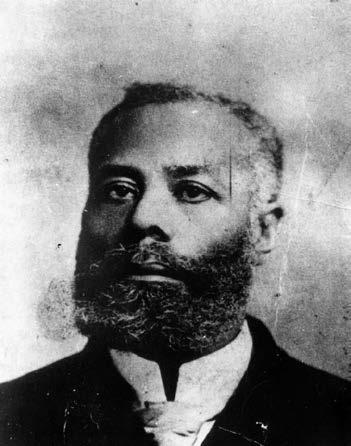
Eilijah J. McCoy was an iconic Canadian-American engineer, who would become world-renowned as a prolific inventor.
Elijah J. McCoy came from very humble beginnings. His parents, George and Mildred McCoy, were fugitive slaves who escaped Kentucky for Ontario through the Underground Railroad to Essex County. Not an actual train or railway line but an organized secret network of people, places and pathways to freedom in Canada.
Elijah J. McCoy was born free in Colchester, Essex County. As a boy, he showed a great aptitude for science and math. He was later sent to Edinburgh, Scotland, to study mechanical engineering at the age of 15. After his training, he had difficulty finding a job in Canada. He headed south and became a fireman for the Michigan Central Railroad. He also worked on steam engine trains and would become known
for his groundbreaking innovations in industrial lubrication.
He became famous for what’s known as the lubricating “oil-drip cup.” It would eventually become standard equipment as it improved efficiency for locomotives and heavy machinery. It would lubricate without having to stop the train, improving the efficiency of train travel.
McCoy patented more than 57 inventions in his lifetime and his innovations spread as quickly as his reputation. There is speculation, that the saying, “the real McCoy,” to ensure you’re getting the best quality, was inspired by Elijah McCoy.
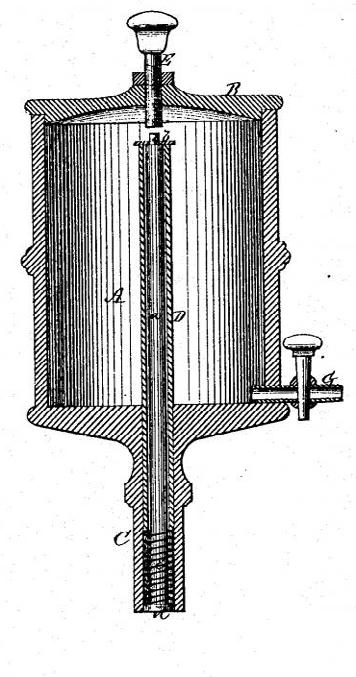
There were many imitations of McCoy’s oil cup, but engineers knew that the model based on McCoy’s design was the best of its kind. Thus, knowledgeable engineers began asking for McCoy’s invention by name.
READ MORE:
The Canadian Encyclopedia Lemelson-MIT Program



Are you a partner with Engineers Nova Scotia? The Community Connections page provides your organization with a connection to our readership of professionals and innovators across the province. Email publications@engineersnovascotia.ca have your logo featured in Community Connections or to place an ad.


March 19 and March 26
Virtual Town Halls As part of National Engineering Month activities, join Engineers Nova Scotia President, Dr. Sue Molloy, P.Eng., and CEO and Registrar, D.S. (Pal) Mann, CD, FCSSE, P.Eng. as they share their thoughts on engineering in Nova Scotia and Engineers Nova Scotia’s way forward. Planning is underway for two sessions in March to permit as many members to participate as possible. All sessions include the same content. These moderated, interactive sessions will allow you to engage the President and the CEO in topics that are important to you. Register: Session 1, Session 2

The National Engineering Month curling bonspiel is a fun and engaging competition designed to promote social networking among participants. Teams represent various organizations, fostering friendly competition in a relaxed environment.
Trivia Night at Dalhousie University is a fun and interactive event that mixes a trivia competition with a casual pizza social. It’s a great chance for students, faculty, and Engineers Nova Scotia registrants to connect and network in a relaxed setting. The trivia rounds will cover engineering-themed questions along with general knowledge topics, offering something for everyone and keeping it lively and engaging. Enjoy free pizza, and chill in a fun, relaxed atmosphere! Register.

March 13

March 12
Professional Development Webinar - Public Speaking for Technical Professionals This session is designed specifically for professional engineers who want to sharpen their public speaking skills and deliver their technical knowledge with confidence and clarity, ensuring their expertise resonates with diverse audiences. Register.

Day
March 14
Pi Day is a special networking event that celebrates Pi Day while providing an opportunity for undergraduate engineering students to connect with both young and experienced professionals. Each Associated University (AU) across Nova Scotia will host a Pi Day event, offering pizza (“pie”) in a casual and welcoming atmosphere. Register.
The Iron Ring at 100: A New Era for the Calling of an Engineer 2025 is a milestone year for the engineering profession, marking the 100th anniversary of the Calling of an Engineer, where engineering graduates are presented with their Iron Ring. A valued symbol for many engineering graduates, the Iron Ring is an ever-present reminder of the commitment engineers make to serving the public with integrity and ethics. Register.

March 3

The beloved legend in the engineering industry passed away December 25, 2024, at the age of 100 years.
From a family man who never forgot his Cape Breton mining heritage, to an accomplished athlete who earned Sports Hall of Fame honours in both baseball and hockey, and an accomplished engineering career from which he only retired at the age of 98, Skit is celebrated as a truly inspiring example of living life to the fullest.
Brenda Vaughan, Skit’s daughter, said, “Dad carried with him an incredible drive to live a life with purpose. He learned from the challenges he faced growing up in a small Cape Breton coal mining town, to push himself physically and mentally to maximize his potential both as an athlete, and in his chosen career as an engineer.”
It all started over a century ago. Proud parents Bernie and Robina (Laben) Ferguson welcomed the arrival of their son Philip, October 13, 1924. He was born and raised in Reserve Mines. His dad and uncles were coal
miners who gained some local notoriety by entertaining their brothers in the ‘pit’ and on the surface, performing skits and reciting poetry when their grueling work was paused or when attending union meetings. These performances earned his father the nickname “Skit”. As Cape Breton traditions go, Skit subsequently inherited his dad’s nickname, leading to a lifetime of explaining that he was ‘Skit’ not ‘Skip’.
With the support and encouragement of his parents, as well as the local priests, Father Jimmy Thompkins and Father Leo Sears, Skit completed high school in Reserve Mines/Glace Bay and then left the island to continue his education, heeding his dad’s insistence that he was never to work underground. Instead of performing entertaining skits like his father, he would capture the delight of the crowd as a tenacious hockey and baseball player.
He earned his B.Sc. from St. FX University and later a spot in the school’s Sports Hall of Fame for two sports. First, as a member of the undefeated 1945-46 hockey team and secondly as an outstanding baseball pitcher.
Skit was a left-handed pitcher in the famous semi-professional Halifax & District Baseball League in the late 1940’s. During this time, the grand old game was a dominant sport in Nova Scotia, attracting thousands of fans to regular season games. For the most part, American imports dominated the League, but Skit stood out as one of the most impressive players.
In his rookie season, as a 21-yearold with the 1946 Truro Bearcats, he compiled an unbelievable 18-1 record (including playoffs) while batting a league-leading .468. In his career in the H&D League, he won 50 of an overall 55 games. He was never replaced as a starting pitcher, finishing every game he started.

The Bearcats went on to win the provincial title and it wasn’t long before professional scouts were watching. Skit received three professional offers but declined them all due to his decision to pursue an engineering degree - obtaining his B. Eng. (Mechanical) from the Technical University of Nova Scotia, now Dalhousie University. This led to his registration with Engineers Nova Scotia as a Professional Engineer (P.Eng.).
During his early career as an engineer, he worked in Quebec, where he played semi-pro ball. One of his most cherished memories was of playing summer semi-pro baseball with Maurice ‘Rocket” Richard. He loved to tell that story and had the photo to prove it.
The CEO of the Nova Scotia Sports Hall of Fame, Bruce Rainnie became lunch buddies with Skit the last 18 months of his life and while sad to hear of his passing was grateful to get to know him very well.
“Skit Ferguson was not just one of the finest baseball players the province has ever produced, he was one of the finest Nova Scotians I have had the pleasure of meeting. There’s a saying used to describe an athlete who embodies integrity and class. We often say, ‘He was even a better person than an athlete.’ Well, for the majority of people, that’s an easy level to achieve – most of us are not overflowing with athleticism. But Skit was and the saying still applies! That gives you sense of the man he was. With his passing, we have lost a legend, a friend, and a symbol of the golden age of baseball in Nova Scotia.”
Skit is also a member of the Cape Breton Sports Hall of Fame for baseball, and the Maritime Sports Hall of Fame.
Despite all those awards and honours, perhaps his most rewarding and enduring gift of his athletic ability was a chance encounter at a Halifax skating rink that led Skit to the love of his life, Helen (Charlton). They married, raised four children, and enjoyed 74 years together before her passing.
Together they cherished an engineering career that would span seven decades and had a wide-reaching impact on the engineering industry and across Atlantic Canada. They also touched the lives of many people, including colleague and friend Aubrey Palmeter, P.Eng., MBA. The CEO of Eastpoint remembers first meeting Skit in the 80’s when they both worked at Esso, but, Palmeter says, it wasn’t until they reconnected at the Consulting Engineers of Nova Scotia that he truly found out the kind of man he was.
“Skit was known as the guy to go to get something done.”
- Aubrey Palmeter P.Eng.
“As a result of our shared Esso experience, and our age difference, he viewed himself as my mentor. Skit would often call or drop in to my office to provide me with his considered advice, or just his opinion. It has been a relationship that continued for more than 30 years. We last met at Tim’s in Dartmouth where we discussed matters of great concern, and he dispensed some very helpful advice with his hallmark grace and humour! Over these many years, Skit has played a very important role in my life and his passing will leave a large hole. He was truly one of a kind!”
Skit spent most of his storied career with Imperial Oil Limited. In 1955, he was Project Engineer for the construction of the new Dartmouth Refinery. Several promotions included Mechanical Superintendent, Process Superintendent, and Operations Manager, where he was responsible for all operations and equipment maintenance, a staff of over two hundred and a budget exceeding seventy million dollars. For the four years leading to his retirement in 1990 Skit was Manager,

Distribution and Marine Operations, Atlantic Canada.
Upon “retirement” he became Executive Director and Chief Operating Officer of Consulting Engineers Nova Scotia, now known as the Association of Consulting Engineering Companies of Nova Scotia (ACEC-NS). In this position, he pursued his passion for engineering as an advocate, promoter, and mentor for the next 33 years.
In his later years (meaning the past few decades), Skit would leap at the opportunity to help and support any and all aspiring engineers he met or learned of, to find their way toward a meaningful career.
He retired (this time for real) at the age of 98. Even after his retirement in 2022, ACEC-NS President, Steven K. Ramsay says Skit remained a tireless advocate for the industry adding, “he was instrumental in developing CENS into an organization that focused on supporting the consulting engineering industry in Nova Scotia. He regularly visited with many government and tendering agencies, and they all knew him as someone who would not leave a conversation until he was sure they truly understood his perspective fully.”
Throughout Skit’s career he received many awards and much recognition. In 2003 he received an Honorary Life Award from Engineers Nova Scotia followed by an Engineers Canada Fellowship in 2008. In 2016, he was the recipient of the F.H. Sexton Gold Medal, awarded by Engineers Nova Scotia to an engineer for exceptional achievements in their chosen field of engineering practice.
The Chief Operating Officer and Treasurer of Engineers Nova Scotia, Kris Dove, FEC, MBA, P.Eng. says he always looked forward to a chat with Skit.
“His passion towards his work was exceptional.”
- Kris Dove, FEC, MBA, P.Eng.
“I miss our regular chats. We spoke on a regular basis regarding the licensing of firms and engineers in the province, he was always focused on ensuring that organizations registered with CENS were in compliance with the regulatory requirements as enforced by Engineers Nova Scotia. Though some information could be gathered through our website, Skit always called me to confirm, and it was a great opportunity to catch up with him and his areas of focus.”
In 2023 Consulting Engineers Nova Scotia presented Skit with the Distinguished Service Award. At that same ceremony, the Mayor of Halifax Regional Municipality presented Skit with a plaque in recognition of his outstanding contributions to his community.
Despite numerous opportunities to pursue his career in other parts of the country and world, Skit was passionately committed to remaining in his chosen community of Dartmouth, Nova Scotia.
For eleven years Skit was a member of the Board of Directors of the Nova Scotia Research Foundation (now InNOVAcorp). He was a member of the Dartmouth Chamber of Commerce for 20 years, including five as an elected member of their Council.
He also served for eight years as Chairman of the Selection Committee for the Nova Scotia Sports Heritage Society and coached both minor hockey and baseball in Dartmouth.
His devotion to Dartmouth was shared deeply with friend and fellow golfer at Brightwood, Gloria McCluskey. The former Alderman and Mayor of the Town of Dartmouth and later MLA knew Skit for many years.
Gloria McCluskey says, “I always thought of Skit not as an engineer, but as a stakeholder of the great City of Dartmouth because of his volunteer work and the energy he put into it. It was his city. I always liked the twinkle in his eye when he smiled.”
A memorial service was held Saturday, January 18 to celebrate his life and lasting legacy. As stories were shared then and since his passing, Brenda Vaughan says the family has appreciated hearing the significant role their dad played in so many lives.
“These stories have often highlighted the importance that Skit put on building relationships. Relationships with family and friends of course, but also relationships with colleagues, acquaintances, and even casual relationships with everyone he would encounter in his daily life. Almost inevitably, discovering some kind of connection, be it through sports or business or simply a shared interest, that would lead to further conversation and a deepening connection.”
Skit’s family hopes people will continue to have moments when on occasion something triggers a memory of him that will both inspire and make them smile.

Start saving more with the group tax-free savings account (TFSA) offered through the Engineers Canada-sponsored Group Savings and Retirement Program. Plus, you can transfer your non-registered investments into the plan and watch your savings grow.
Want some advice? Connect with your personal Canada Life health and wealth consultant online when it’s convenient for you at all steps of your financial journey.

Project: Sable Island Microgrid Development
Location: Sable Island
Submitted by: EastPoint Engineering
The Sable Island Microgrid Development revolutionizes energy generation on this remote national park reserve, transitioning from inefficient diesel generators to a cutting-edge hybrid system. Featuring 100 kW solar photovoltaics, advanced battery storage, and high-efficiency variable speed diesel generators, reducing generator fossil fuel consumption by 77%, cutting 130.9 tons of CO2e and saving $290,000 annually. This project showcases renewable microgrid potential in remote, ecologically sensitive environments, with a reasonable payback period.
P.Eng. Participants: Chris Russell, P.Eng., PMP, LEED AP BD+C, CM-Lean, Sandy MacInnis, P.Eng.




Location: Lunenburg County
Submitted by: Nova Scotia Department of Public Works
The new exit 12A connects the Bridgewater Business Park to Highway 103. This makes travel safer and more efficient by taking heavy trucks off local roads. It also supports trade by making it easier to transport goods. The project includes a new diamond interchange at Exit 12A, the replacement of the St. Phillips Street overpass bridge and auxiliary lanes connecting Exit 12A and Exit 13. P.Eng. Participants: Donald Maillet, P.Eng.


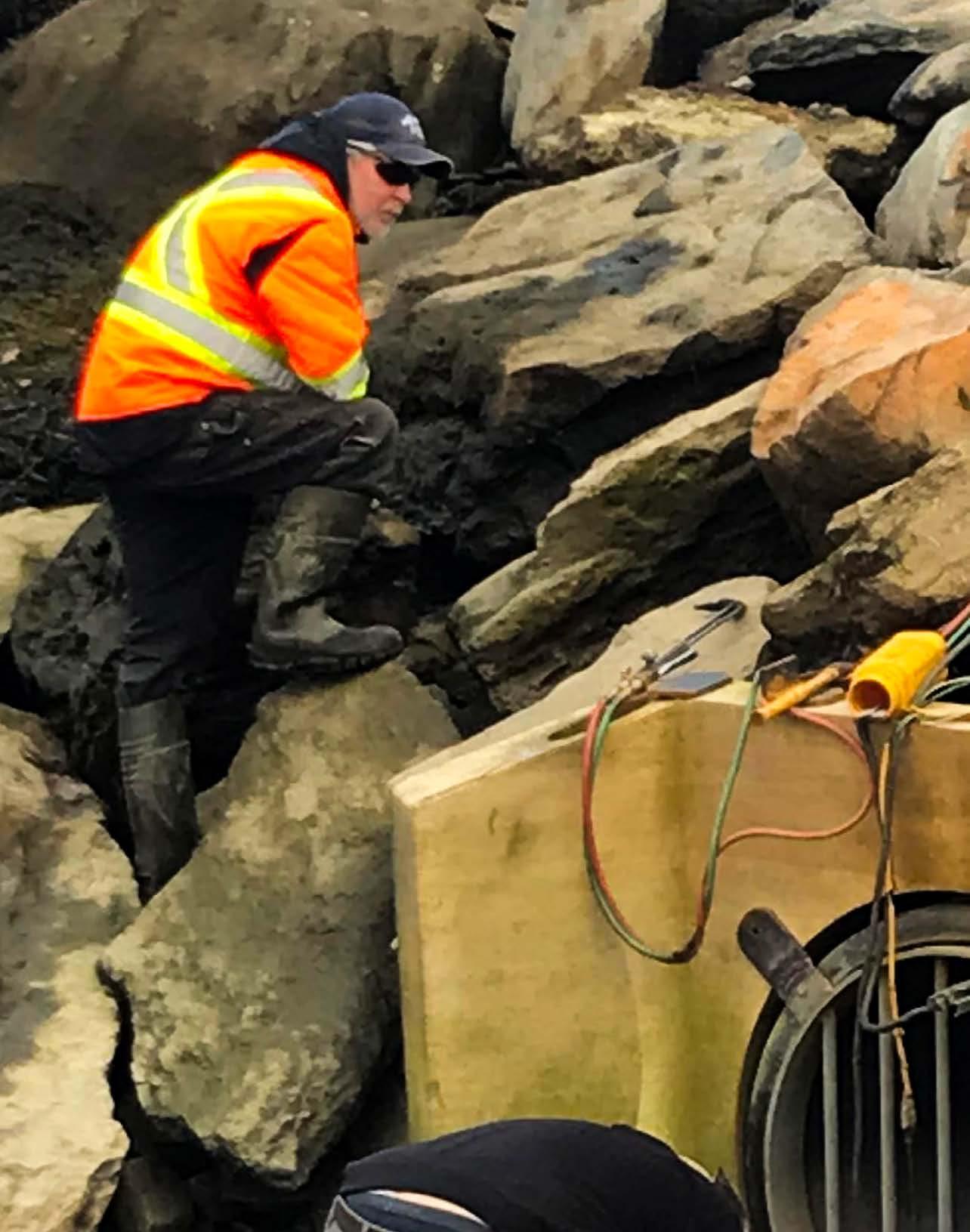
The Vancouver Infrastructure Project was a $2.8M dollar project that replaced 70+ year-old water lines, separated combined storm and sanitary flows, and added new storm lines in the Vancouver Intersection. Separating the storm water from the sanitary line reduces the load on the town’s treatment plant, as rainwater flows directly to the harbour. This allows for a major reduction in electricity use by the plant and a reduction in greenhouse gases emitted by the town.
Often referred to as “five corners,” the intersection of Vancouver, Main, and Chestnut Streets is one of Yarmouth’s busiest, and includes the primary route to the Yarmouth Regional Hospital. Pedestrians and drivers alike benefit from the new traffic lights. Pedestrian buttons have been upgraded to audible, which meets the latest accessibility requirements. New curb ramps feature tactile warning surfaces to assist pedestrians with vision impairments. Finally, another key update is the installation of a tidal check valve. Saltwater intrusion into the system has been observed during high tides and peak rainfall events over the past five years. This valve works to stop salt water from entering the system from the harbour. Keeping saltwater out of the system also reduces the load on the treatment plant.
P.Eng. Participants: DeMario Dunkley, P.Eng., Chris Boone, P.Eng.


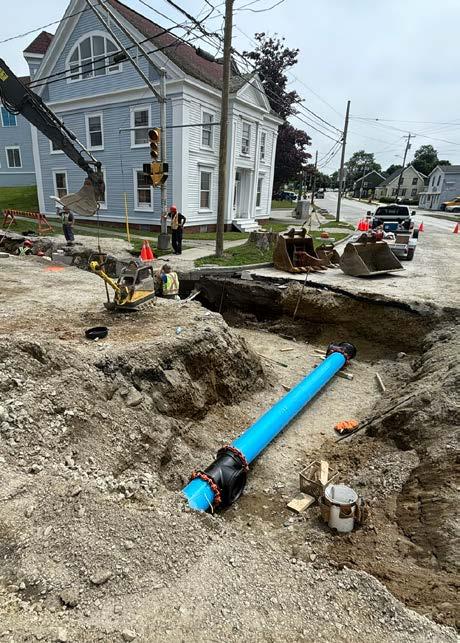

Project: North Cumberland
Health Care Centre
Location: Cumberland County
Submitted by: Nova Scotia

This new community hospital serves the communities of Pugwash, Wallace, Port Howe and the surrounding areas. It offers primary care, urgent care, ambulatory care services, a small inpatient unit, and a number of outpatient services like diagnostic imaging, rehab, mental health services and more. It replaces the North Cumberland Memorial Hospital, which opened in 1966.
P.Eng. Participants: Tonya McLellan, P.Eng.
Location: Yarmouth County
Submitted by: Nova Scotia Department of Public Works
This pre-primary to grade six school replaces the existing 60-year-old school and can accommodate up to 150 students. The facility is just over 56,000 square feet and includes a gym, canteen, daycare and community centre. Special care has been taken to reflect the region’s Acadian culture. This includes decorating the school with Acadian colours and a student-led art installation in the cafeteria.
P.Eng. Participants: Tonya McLellan, P.Eng.


Project: Highway 107 (Bedford-Burnside Connector)
Location: Halifax County
Submitted by: Nova Scotia Department of Public Works
In 2024, this project was completed creating a new 9 km, controlled access, 4-lane highway. It uses a high-tension cable barrier median to conserve land and limit head on collisions. It includes 8 new bridges and 9 roundabouts. This will improve safety and reduce traffic congestion for the more than 40,000 vehicles a day that use Magazine Hill and the Bedford Bypass.
P.Eng. Participants: Donald Maillet, P.Eng.


Article provided by International Women’s

Engineering can be a very fulfilling career with countless opportunities to learn, grow and succeed.
Yet in this industry still dominated by men, highly visible awareness raising campaigns along with greater career satisfaction and rewarding salaries, are helping women push for change.
The breadth of engineering careers is broad: chemical engineering, civil engineering, electrical engineering, mechanical engineering and more - and the industry itself covers a vast range of disciplines from aerospace and audio, to nuclear and Nano.
From renewable energy, human genetics, cybersecurity, manufacturing, space travel, preventing disease, tackling poverty and global warming - the prospects for a fulfilling and rewarding career in engineering are boundless. Plus, engineering skills are readily transferable from one industry to another because all kinds of organizations recognize engineers as generally being well-educated and good at solving problems, so that is a great person to have in any team, in any industry.
The engineering sector certainly needs more women. The sector seeks women with fresh ideas, new perspectives, varied experiences, and different approaches to innovation. Yet, institutionalized gender stereotypes can dissuade girls and women from pursuing careers in engineering. Increased visibility and awareness raising are key areas where continuous action is needed in order to challenge mindsets and public perception.
Many women engineers themselves are taking active steps to do what they can to help forge equality within the engineering sector and to encourage more women and girls to make considering a career in engineering. For example, award-winning chartered electrical engineer Kerrine Bryan decided to help encourage more girls into engineering through publishing career-themed children’s books including My Mummy Is An Engineer.
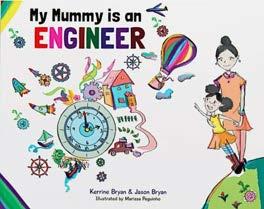
“We’re losing potential engineers at every stage of life, and it starts from a young age because bias and misconceptions in media and toys often implant ideas into children’s minds that engineering is for men and involves getting your hands dirty and fixing things, which doesn’t appeal to girls if they’re
brought up to believe they should be quiet, neat and tidy,” says Kerrine.
There’s also a further great edition: My Mummy is a Scientist.
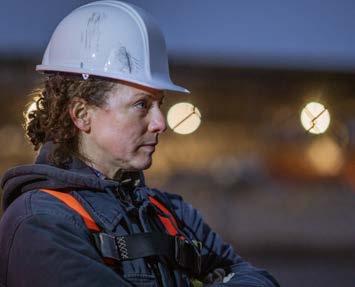
varied and evolving industry
Engineering can provide a tremendous career for women who value variety, excitement and seek to shape the world. At the forefront of innovation, engineers are often empowered to identify solutions to some of the world’s most complex challenges.
Engineering is also a constantly evolving industry that demands new approaches and the ability to adapt to new situations. Due to new technology and an ever-changing world, there is likely to be many engineering jobs in the future that are not yet conceived today. Many of the jobs needed in the years to come have not been invented yet, just as many of the engineering jobs known today did not exist some decades ago.
The spread of mobile technology, the development of composite materials, the sequencing of the genome, the increasing demand for energy, and many other advances have created a huge variety of fascinating new jobs.
Engineering often requires competency in areas like by mathematics and science, however engineering is also a creative profession through uniquely combining logic and imagination. Engineering also requires varied skillsets, experiences, and personalities with artistic minds and creative thinkers.
With such a variety of disciplines across the industry, there are generally roles to suit a breadth of qualifications. What tends to unite engineers, however, is their logical and critical thinking and creativity along with their sheer attention to detail and an enduring passion to make a difference.
Engineering is also a globally connected industry so for women with a taste for travel, engineering can provide considerable possibilities to explore new countries, regions and cultures. Plus, with standardized engineering skills and education, living and working abroad, particularly in countries that need to fill a skills gap, can be likely.
The opportunity to make a difference engineering careers
Importantly, engineering is an industry where there can be a direct and positive impact on the world. From creating energy-efficient homes to new medical equipment, engineering can make a significant difference to individuals, communities, economies and the planet.

Communication skills are key for a career in engineering. Engineers have an opportunity to work with different teams on various projects, sharing ideas and brainstorming, while also attending conferences and training to meet like-minded people.
International Women’s Day (March 8) is a global day celebrating the social, economic, cultural, and political achievements of women. The day also marks a call to action for accelerating women’s equality.
During National Engineering Month, held each year in March, Engineers Nova Scotia’s signature event is Spotlight on Local Innovation. The evening celebrates the achievements of women engineers in our community by highlighting groundbreaking projects and research led by female engineers in Nova Scotia.
The theme of International Women’s Day is Accelerate Action. The CEO of Engineers Nova Scotia and our 2025 Spotlight on Local Innovation speakers share their thoughts on what it means to them.

“Engineers Nova Scotia will work towards inclusive excellence by supporting the efforts of our registrants and member companies to promote a diverse and equitable engineering community that empowers women, and other equity deserving groups, to thrive, innovate, and lead in shaping a sustainable future for all Nova Scotians.”
- Pal Mann, CD, P.Eng.

“To me, Accelerate Action as the theme to International Women’s Day means taking decisive steps to drive resolutions around the issues we collectively face on gender equality. In engineering, which remains a male-dominated field, accelerating action is about empowering women to be confident in their decisions to lead, innovate, and carry out actions that will serve their community. We already know what needs to get done. Now’s the time to do it.”
- Spotlight 2025 Speaker, Chelsea McLean, P.Eng, EMIT, Senior Energy Manager, EfficiencyOne

“For me, the theme Accelerate Action means embracing inclusivity, respect, and ensuring that women are treated equally to their male peers. It’s about creating opportunities for women to step into management and director roles, so younger women have role models to aspire to.
The engineering profession has made great strides, but there’s still a significant journey ahead, and now is the time for decisive action. We need to actively challenge the barriers that remain, promote diversity, and build an environment where every woman feels supported to succeed and thrive.”
- Spotlight 2025 Speaker, Katuscya Gauvin, P.Eng. Senior Project Manager, Clayton Developments

The theme Accelerate Action, for me, speaks to the frustration of all talk with no tangible change, particularly from those in positions of power with the ability and authority to drive real progress. It’s a call to move beyond empty promises and start implementing concrete actions that will lead us towards true equality. This isn’t just about improving the current situation for women – it’s about creating a future where equality is the standard. I want to see a future where gender equality is the norm, and I want to see it sooner rather than later. It’s no longer enough to wait for change to come gradually. It’s time for action. We need it now and we need it to happen quickly.
- Spotlight 2025 Speaker, Bobbie Blaney, P.Eng., Manager, Service Delivery, NOVONIX Battery Technology Solutions
Manager, Service Delivery

With 20 years of experience in engineering and project management, Bobbie Blaney, P.Eng., has built a strong career in the oil and gas, environmental, and research and development sectors.
While her father is also an engineer, she fell in love with chemistry in grade eleven, so when she applied to university, she picked Chemical Engineering. “I thought if I didn’t like engineering, I could transition to chemistry. Luckily for me, I really loved chemical engineering.”
She earned a Bachelor of Science degree in Chemical Engineering from the University of New Brunswick.
Over the course of her career, she has honed expertise in engineering consulting, managing complex projects, and leading cross-functional teams to drive innovative solutions.
Currently serving as Manager of Service Delivery at NOVONIX Battery Technology Solutions, Bobbie oversees internal R&D projects while leading a project management team responsible for external customer projects. She is passionate about fostering collaboration, optimizing processes, and ensuring
the successful delivery of projects that meet both client expectations and organizational goals.
Nickel-based cathodes are the most expensive component of a lithium-ion cell. Their production is complicated and generates large quantities of waste. NOVONIX has developed a new patented method to synthesize NMC powders in a completely dry state. NMC stands for nickel manganese cobalt oxide. These metals, along with lithium, make up nickel-based cathode. This process, called all-dry, zero-waste synthesis, produces single-crystal
The adoption of the NOVONIX process is expected to bring about substantial environmental benefits. The reduction in power consumption, water usage, and waste generation, combined with the elimination of toxic byproducts, position this technology as a leading solution for sustainable CAM production. By implementing this process, the project will deliver a lower carbon footprint, conserve critical mineral resources, and support the global transition to clean energy technologies.
This presentation will focus on the installation and commissioning of our
Engineers Open Doors “speaks to the role engineers play in creating opportunities. We don’t just design and build products or systems.
Our work allows emerging technologies and breakthrough discoveries to scale up faster and more safely, making them accessible and beneficial to people around the world.”
NMC powders showing competitive performance relative to conventionally produced NMC while eliminating process water requirements, has significantly reduced waste streams and uses less energy.
Traditional wet processes generate significant quantities of sodium sulphate (1.5-4 tonnes Cathode Active Material (CAM) and other hazardous byproducts (e.g., heavy metals and ammonia) that require extensive treatment and disposal. By contrast, the NOVONIX process generates little waste and eliminates conventional waste streams, making it a solution that is both environmentally and economically advantageous.
10 tonne per annum pilot facility, which serves as the R&D platform to demonstrate process feasibility and improvements of ‘all-dry’ NMC cathode active material synthesis, and the subsequent the work to scale up various chemistries from lab scale to pilot scale. This project represents a critical advancement in the battery materials ecosystem. By providing a simplified, lower-cost, and sustainable turnkey commercial solution, NOVONIX is positioned to address the growing demand for high-performance CAMs while minimizing environmental impact.

Katuscya Gauvin graduated in Civil Engineering from Université de Moncton in 2014. She began her career as a Municipal Design Engineer with WSP and contributed to major projects like the Eglinton Crosstown Light Rail Transit (LRT) in Toronto. Seeking hands-on experience, she worked for four years on fly-in, fly-out projects, including liquefied natural gas (LNG) and mining ventures in remote locations across Canada. While those long hours and demanding conditions weren’t easy, she gained invaluable experience and helped prove her capabilities in the field. She says one of the biggest challenges she faced as an engineer was breaking into a field that isn’t always inclusive for women. “While the profession has come a long way, earning the respect I deserved required perseverance and dedication. It’s incredible to see how much the profession continues to evolve,
and I’m proud to have been part of that progress.”
She chose engineering as a profession and persevered because it allows her to blend creativity with problem-solving to tackle challenges. She finds great satisfaction in seeing ideas come to life. Engineering also fuels her passion for innovation, giving her the opportunity to create solutions that make a real, lasting impact on my community.
Katuscya now specializes in Land Development with Clayton Developments, overseeing impactful projects throughout Halifax Regional Municipality. Recognizing the growing issue of people living in tents throughout the region, Clayton Developments sought to make a difference. The company approached the provincial government to explore the possibility of a partnership, leveraging resources, expertise, and manpower to help solve the problem.
The Cobequid Tiny Homes project is a government-funded initiative aimed at addressing the homelessness issue in the Halifax Regional Municipality (HRM). “This project was urgently needed because no one should have to experience homelessness or live in such difficult conditions.”
The result was the development of a plan for 60 tiny homes, along with a support services building to provide essential resources for the community.
Katuscy has met some of the early residents, and they have shared that they are absolutely overjoyed – so is she. “Seeing how much this project has changed their lives brings me so much happiness, and it inspires me to keep giving back in any way I can. It means so much to know that it has given people their dignity back.”


“To me, Engineers Open Doors means that the opportunities in engineering are endless. Every engineer has the ability to make a difference—whether it’s through designing innovative solutions, finding sustainable alternatives, or improving lives in ways big and small. This theme is a reminder that the engineering profession isn’t just about technical expertise; it’s about opening doors to a better future, both for ourselves and for the communities we serve.”
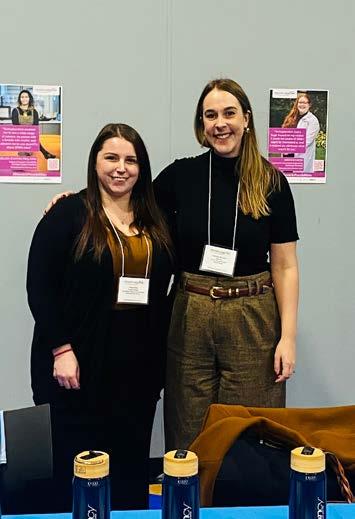
Chelsea McLean, P.Eng, is an environmental engineer working as a Senior Energy Manager at EfficiencyOne. She and her team of nine Energy Managers are focused on decarbonizing the built environment through identifying and implementing energy efficiency measures for municipalities, First Nations communities, and provincial public housing. Passionate about sustainability and positively impacting community development, she is dedicated to creating a greener future for Nova Scotia.
She chose engineering because it combined her aptitude for problem-solving with her gravitation to subjects like math and science. She remains engaged in engineering because her work allows her to make tangible, positive impacts on the environment and communities across the province. “Working in the energy sector, it’s more
exciting than ever to be an engineer; the landscape is constantly evolving, allowing me and my team the space to be innovative and nimble,” she says.
Chelsea says it is important to meet client needs depending on where they are with their efficiency journey and is immensely proud of their team for
“Engineers Open Doors to me means that our profession creates opportunities and finds solutions that enhance our quality of life. For sustainability, this includes innovating technologies that reduce our reliance on fossil fuels for energy production. By developing energy-efficient buildings, renewable energy systems, and smart infrastructure, we can reduce our carbon footprint and promote sustainability in our built environment.”
The mission of EfficiencyOne is inspire, empower, and educate communities throughout the province on the importance of energy efficiency in driving long-term sustainable solutions. She offers just a few simple tips related to reducing your energy usage:
• Switch to LED lighting: They use less energy and last longer than traditional bulbs.
Motion sensors are also an effective way to reduce usage for areas of your home or workspace not regularly accessed.
• Use programmable thermostats: They help optimize heating and cooling, reducing energy consumption.
• Consider switching to a heat pump to efficiently condition your home or office.
• Insulate your hot water tanks and use low flow faucets and aerators.
• Check out Efficiency Nova Scotia’s offerings for Home Energy Assessments and Efficient Product Installs.
continuing to build rapport and earn the trust to get to work closely with five First Nations communities and sixteen municipalities across Nova Scotia to implement energy savings, greenhouse gas (GHG) emissions reductions, or operations and utility cost savings. She says the investments are leading to measured success for the environment and the bottom line. She says, “By building relationships and delivering excellent client services, my team saved over 5 GWh of electric energy in 2024, equating to a reduction of GHG emissions by approximately 2,700 tons of carbon dioxide emissions annually. The projects we supported last year improved building performance, reduced annual utility costs by almost $1M collectively, and provided sustainable options for our clients to move towards net-zero.”
Submitted by Nova Scotia Power

A mix of energy solutions is needed for Nova Scotia to meet provincial and federal environmental targets, which include getting off coal and reaching 80% renewables by 2030.
To help us reach these goals while maintaining reliability for customers, we are developing three 50MW/4-hour grid-scale battery facilities located in Bridgewater, White Rock, and Waverley.
Batteries and other energy storage technologies are essential in our move towards more renewable electricity. As our province introduces more wind capacity and investigates the future potential of hydrogen sources, additional energy storage is needed to ensure energy is there when Nova Scotians need it and to maintain reliability for customers.
Our project team has been working with stakeholders and engaging
communities throughout the planning stages of the development. In June 2024 we received full project approval from the Nova Scotia Utility and Review Board for the capital costs required to develop the grid-scale battery facilities.
Preliminary site work has begun and will continue through 2026, with the first site operational by 2025.
The Grid-Scale Battery project aligns with the province’s Clean Power Plan. In December 2023, the Department of Natural Resources and Renewables provided an Order in Council, directing Nova Scotia Power to build three gridscale battery facilities.
Site work to date includes:
• Vegetation clearing at the Bridgewater and Waverley sites
• Archaeological shovel testing and additional survey work at White Rock
• Construction of a new access driveway in Bridgewater and White Rock and a driveway extension in Waverley
• Delivery of transformer and upgrades to the Bridgewater and Spider Lake substations
• Early civil work on the battery site in Bridgewater






Engineers Nova Scotia introduces new P.Eng. to the engineering community with each issue of The Engineer. Download the PDF form here .






Discipline: Electrical Engineering University: Dalhousie University

What inspired you to pursue a career in engineering?
My inspiration to pursue a career in engineering stemmed from a deep fascination with how things work and the desire to solve real world problems.
The opportunity to blend creativity with technical expertise in engineering allows me to contribute meaningfully by helping shape efficient and sustainable infrastructure for future generations.
What are your long-term career goals?
My long-term goal is to become a transformative leader in sustainable infrastructure development, with measurable milestones tied to technical mastery, industry influence, and legacy-building.
Discipline: Municipal Engineering University: University of British Columbia

What inspired you to pursue a career in engineering?
I originally chose engineering because I loved solving problems, and I chose UBC Engineering because my father and grandfather were both UBC civil engineering graduates (1981 and 1953 respectively).
What are your long-term career goals?
I look forward to being involved in designing the cities of the future: sustainable, safe and community-oriented. Being able to transform cities to meet the needs of the communities that live in them is my lifelong goal.
Discipline: Chemical Engineering University: Université de Sherbrooke

What inspired you to pursue a career in engineering?
Pursuing a career in engineering allows me to actively contribute to solving problems that impact both our community and the world. Additionally, the principles of engineering help me navigate everyday challenges, making my life smarter and more enjoyable.
What are your long-term career goals?
My long-term goal is to continuously develop my technical, communication and leadership skills to pave the way for career advancement and build trust within society. I also aim to inspire and mentor future engineers, helping them discover their passions and grow professionally.
Discipline: Civil Engineering University: Université de Moncton LinkedIn

What inspired you to pursue a career in engineering?
Growing up in a city rich with history, I was enchanted by the magnificent monuments and remarkable structures that filled my surroundings. Each building whispered its own story, igniting my realization that civil engineering was my path to leaving a lasting legacy. The idea of designing enduring structures that could influence generations long after my time inspired me deeply. I felt a strong motivation to contribute to the creation of modern marvels that would inspire and shape the future.
What are your long-term career goals?
My goal is to become a pioneering civil engineer dedicated to creating sustainable and innovative infrastructure solutions that enhance community life and promote environmental conservation through cutting-edge, eco-friendly design technologies.
Discipline: Civil Engineering University: University of New Brunswick LinkedIn

What inspired you to pursue a career in engineering?
My uncle, who is a civil engineer, was a major inspiration for me to pursue engineering. Seeing his work and the impact it had on communities sparked my interest in the field. I’ve always enjoyed problem-solving and working on projects that lead to a tangible outcome. That’s what drew me specifically to civil engineering–I love seeing an idea transform into a finished structure that serves a purpose and stands the test of time.
What are your long-term career goals?
My long-term career goal is to transition further into project management, where I can take on greater responsibility in overseeing projects from inception to completion.
Discipline: Mechanical Engineering University: Imo State University, Owerri. Nigeria LinkedIn

What inspired you to pursue a career in engineering?
My Dad. He is a contractor for the national corporation producing and distributing crude oil back home in Nigeria. I went to work with him when I was a kid and I became infatuated with the engineers and their roles and responsibilities. That feeling has followed me ever since then and is part of the reason why I love my job.
What are your long-term career goals?
I would like to lead a cross-functional project team in the delivery of the first Canadian Surface Combatant Ship (The River Class Destroyer) to Canada.
Discipline: Civil Engineering University: Missouri S&T University

What inspired you to pursue a career in engineering?
My father is a Civil Engineer as well, and I always enjoyed solving math problems (weird but true). So, I opted for engineering.
What are your long-term career goals?
I wish to build upon my experience in bridge design and, if possible, be part of a team designing at least one suspension or cable-stayed bridge.
Discipline: Mechanical Engineering University: Rizvi College of Engineering, Mumbai University LinkedIn

What inspired you to pursue a career in engineering?
My passion for problem-solving and curiosity about how things work led me to engineering. Additionally, my interest in design and optimization motivated me to pursue mechanical engineering. At my core, I am driven by the chance to apply technical knowledge to real-world challenges and create a positive impact.
What are your long-term career goals?
I aim to leverage my experience in HVAC and refrigeration projects to focus on system design and equipment selections to improve energy efficiency and deliver sustainable solutions. My goal is to become an expert in HVACR field, leading efforts to implement energy conservation practices, improve industry standards, and drive innovation.
Discipline: Mechanical Engineering University: Dalhousie University

What inspired you to pursue a career in engineering?
My love for mathematics and physics led me into my engineering education. I wanted to pursue a tangible way for math and problem-solving to be the guiding star for my career.
What are your long-term career goals?
Wherever I go and whatever I do throughout my career will ideally blend problem-solving, creativity and art, with a little finance thrown in there too. I love being a part of holistic business solutions and aim to build a career for myself reflecting that.
Discipline: Structural Engineering University: Dalhousie University

What inspired you to pursue a career in engineering?
My passion for innovation, construction, and creative problem-solving led me to pursue civil engineering—a decision I would gladly make a hundred times over.
What are your long-term career goals?
My goal is to contribute to the development of sustainable infrastructure worldwide as a structural and earthquake engineer. I believe the sky is truly the limit, and that as engineers, our responsibility is to shape the future with creativity and confidence grounded in knowledge, rather than fear.
Discipline: Industrial Engineering University: Dalhousie University LinkedIn
What inspired you to pursue a career in engineering?

I wanted to be an engineer because I wanted to keep as many doors as possible open for my future.
What are your long-term career goals?
I am aspirational of an equitable and vibrant world that holds at a sustainable equilibrium. As a teen I wrote down “Work for the United Nations” on my life goals list. Considering my values now, I would still like to see this as part of my future.
dal.ca/faculty/engineering/future-students/future-students.html

Engineers Nova Scotia introduces new P.Eng. to the engineering community, with a portrait and a brief write-up of the engineer’s future goals.
February 1 for mid-February publication
May 1 for mid-May publication
August 1 for a mid-August publication
November 1 for a late November publication
Download the PDF form here .